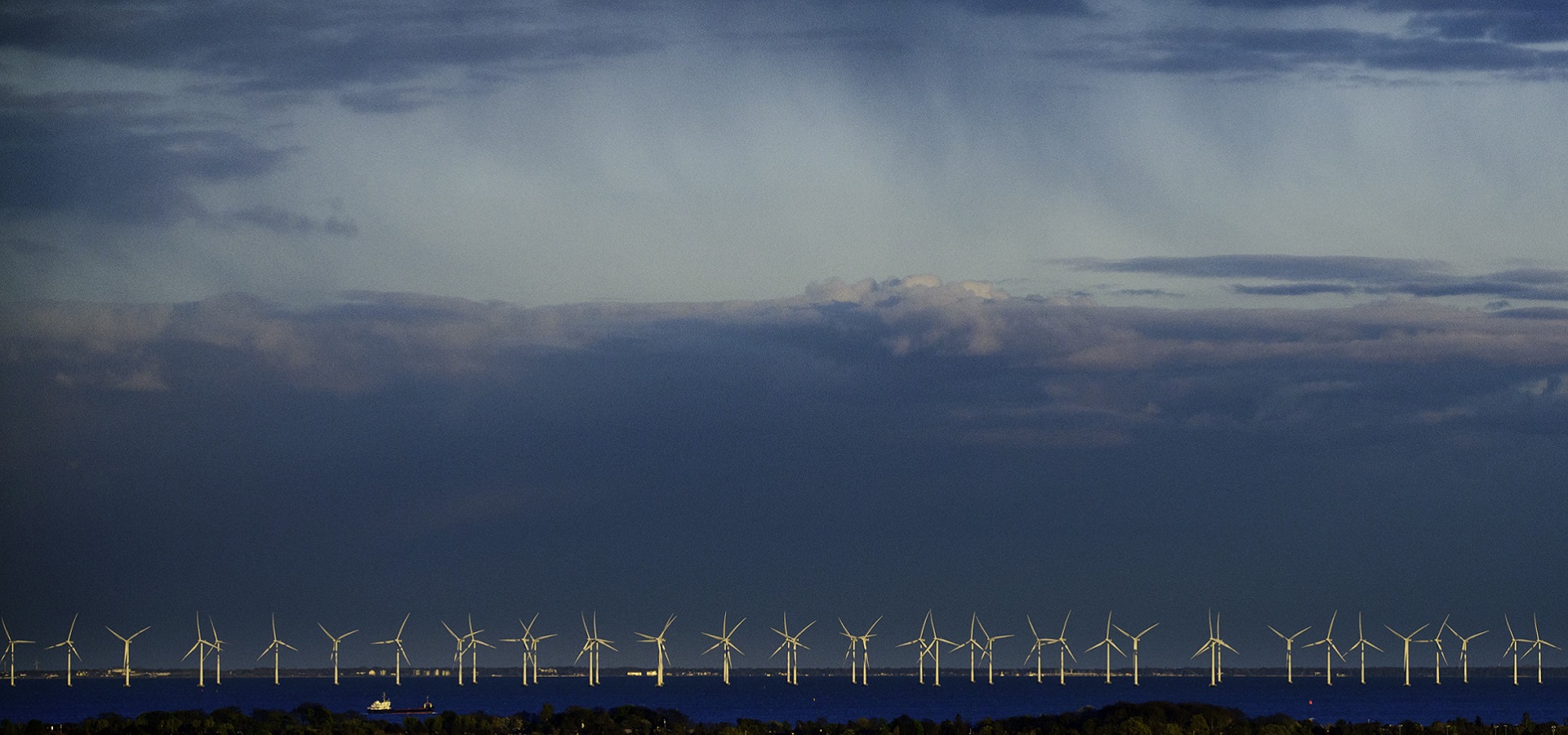The world’s largest wind farm two decades ago may not survive as a co-operative. At least this is what the Danish energy industry says. The co-op’s founders remain defiant – and optimistic. Paul Hockenos has the story.

(CC BY-SA 2.0, Jimmy Baikovicius)
Copenhagen, Denmark
From atop one of the Middelgrunden wind park’s turbines in the western-most waters of the Baltic Sea, one surveys the urban landscape of Copenhagen immediately to the left, and much further on the horizon to the right Sweden’s coastline is clearly visible. Perhaps the most storied wind park in the world, Middelgrunden’s turbines had been the largest and most powerful of their kind when in 2001 a co-operative of Copenhagen citizens and the local utility turned a pipedream into reality. So iconic has the wind farm become for this environmentally minded country, Denmark’s politicos like nothing better than to be photographed with the graceful arc of 20 turbines over a shoulder.
Yet, decades after the near-shore park began generating electricity, Middelgrunden’s turbines are ancient technology, and in terms of size the 68-meter high masts are lilliputian compared to offshore wind towers today that soar three times as high. None of that, however, bothers the visitors on this sun-blessed September weekend, many of whom are members of the 8,600-person Middelgrunden Wind Turbine Co-operative that owns half of the turbines in the 3.5 km crescent. They clamber up the 13 sets of ladder that lead to the turbine’s cockpit, its top hatch thrown open up like the roof of an old-fashioned convertible for the occasion. Kids are encouraged to crawl over the generator and gear shaft or peer off the sides into the sea below.
Most of them seem only vaguely aware of the information that co-op leader Hans Christian Sorensen reveals to them as they pose for selfies: Middelgrunden’s technology and hardware was only meant to last about twenty years and its contract expires next year. HOFOR is currently testing a repowered system, a Vestas V80, on one of its ten turbines.
The co-op has looked into revamping and updating their turbines but the old structure inhibits meaningful renovations. There’s the possibility that the Danish Energy Agency, the state body responsible for energy, might simply decide that the park can operate another handful of years as it is, supplying the city with 3% of its power – nothing to sniff at.
But there’s also the real possibility that the co-op can’t repower on a small scale – and that the city terminates the contract. This would mean that the Middelgrunden park, the pioneer that launched thousands of imitators, might cease to exist in its present form. The park could be completely repowered, which would mean that every turbine would be replaced with larger, more powerful turbine, a project probably beyond the co-operative’s financial means.
“I’m afraid this is the most likely scenario,” sighs Kim Pind Jensen, director of the wind power operations of Hofor, a utility owned by Copenhagen’s municipalities that now operates the park’s other ten turbines. “The offshore projects these days are so much bigger and so much more powerful than in the past that co-operatives cannot pay for them.” Today 22% of Denmark’s total electricity consumption is produced by wind turbines, the highest rate in the world, he notes.
“The renewables industry no longer receives subsidies in Denmark,” says Kristine van het Erve Grunnet of Dansk Energi, a lobby organisation for Danish energy companies. “This means there’s a lot more risk involved in the investments. The renewable energy projects today don’t compare to those of 20 years ago. What worked then won’t work now.”
Local involvement in energy projects is a key ingredient in the recipe of Denmark’s success story, admit Jensen and van het Erve Grunnet. The Middelgrunden wind farm showed how an offshore wind farm could work with high citizen approval in a densely populated area. But this is going to look different in the future, take different forms than it has until now, they say.
The dilemma faced by the Middelgrunden Wind Turbine Co-operative is one that other wind parks in Denmark might find themselves facing in the near future. The co-operatives and collectively owned renewable energy parks are no longer as attractive to Danes and the old business models are no longer valid. The Middelgrunden co-operative, for example, has suffered mightily from the Corona pandemic-induced fall in electricity prices. It finds it challenging to even cover basic repair costs.
High above the Baltic Sea, Sorensen, one of the original co-op members, tells one fascinated group of visitors after another about the park’s early travails and the lessons learned that it could pass on to other wind parks. The co-op managed to deal with tidal movements, wave loading, ice loads, and the corrosion of the aggressive marine environment on submarine cables. Middelgrunden’s days aren’t by any means over, he says, brushing aside the criticisms of the industry’s bigwigs.
“In the last 10 years we have experienced most years without incentives and we’ve made it work,” says Sorensen, rejecting that a co-op can’t make it on the free market. ”The uncertainty is larger, yes, but we have not observed any reluctance to invest. When asked about reinvesting in the new circumstances, more than 50% of our shareholders were interested.”
The co-op members figured out how to make the biggest wind turbines in the world work twenty years ago, says Sorensen. They can surely figure how to keep them going twenty years later.